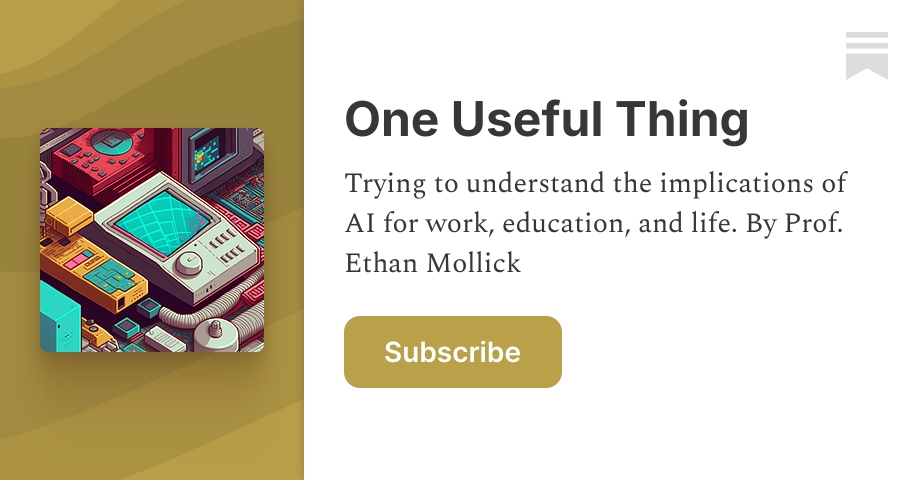
Home assignments and admission tests are things of the past, cheating is easier than ever, students will become more passive in class, and the flipped classroom is the lifebuoy of the teaching staff. But at the end of the day, students have become ten times more productive. Artificial Intelligence, especially in tools like ChatGPT, has changed the classroom for good – on every level of education. As pupils and students go back to school, Ethan Mollick has some sound advice for the teaching staff. Which is needed “because there is no instruction manual. We’re all figuring out as we go.”
- Teachers need guidance on how to prepare students for an AI-driven world.
- AI is set to transform how we work and live, so education must evolve to equip students with new skills.
- More research and public discussion is required to develop an “instruction manual” to help teachers reshape curriculum and pedagogy for the AI age.
In last week’s episode of the Hard Fork podcast, Ethan Mollick, an associate professor at the Wharton School at the University of Pennsylvania and the creator of the substack One Useful Thing, delved into the implications of generative AI in the educational landscape. Mollick, who has been at the forefront of integrating AI into his classroom, shared insights on the challenges and opportunities this technology presents.
Listen to the whole podcast on Spotify:
The Flipped Classroom and Active Learning
Mollick believes that while the educational sector might face challenges in the initial years of AI integration, the future is promising. He emphasized the concepts of the “flipped classroom” and “active learning.” In a flipped classroom, students learn material outside the class and practice it inside, reversing the traditional model. With AI, students can now have personalized tutors to guide their out-of-class learning. Inside the classroom, AI can assist educators in creating engaging experiences, allowing students to apply their knowledge actively.
“It’s all about putting knowledge to use”, he says. “It’s all about challenging yourself and pushing yourself into an active learning environment. So it flips the classroom experience where instead of focusing on lecturing inside a class and doing assignments outside, you do the reverse. It turns out AI is really good at helping us create engaging experiences.”
Enhancing classroom activities
Mollick envisions AI not as a replacement for human interaction but as a tool to enhance the learning experience. “The AI is remarkably good about taking theory and giving you practice from it. So, if you say I want to have an in-class activity for fifth graders to teach about entropy, and I’ve done this, it came up with a cool idea of an in-class entropy activity involving balls and people standing still and running around. It tied nicely into entropy. And then, it suggested a good classroom discussion. Then, it built a game and coded the whole game for me that students could play with that activity. Such applications can transform how educators approach lesson planning, making learning more interactive and dynamic.”

In Mollick’s entrepreneurship classes, he has made using AI mandatory. “It’s been great. I require people to do at least one impossible assignment. So if you can’t code, you have to write working software. I expect a fully built-out graphic design product if you’ve never done design work. Every assignment has to be critiqued by at least three famous entrepreneurs through history, which teaches them how the AI works.”
The way good teaching works is by soliciting explanations from students and critiquing the explanations, Mollick explains. “So I give them prompts that do that kind of interaction. And I give them prompts that act as a mentor and help them with classroom problems. And prompts that they can use for their teams to help do good team activity. So there is this kind of interesting role where I’m designing material that then interacts with them like a teaching assistant or research assistant.”
Cheating
With the rise of AI, traditional homework assignments seem to be becoming obsolete, as students can easily use AI to complete them. Mollick acknowledges that, while detecting AI-generated work is nearly impossible, educators can adapt by focusing on in-class activities and oral exams. The emphasis should shift from rote assignments to fostering genuine understanding and application of knowledge.
“Stage one is recognizing that your homework broke. And that means that you may have to flip classrooms. You may have to hold people accountable with in-class exams, with having the Wi-Fi turned off, and your Chromebook in demo mode. There are ways of solving this problem in the short term. I think the longer-term problem is: What does this all mean? What does this change about education?”
Changing the culture of the classroom
The introduction of AI has undeniably changed classroom dynamics. Students might be less inclined to ask questions in class, choosing instead to consult AI later. “One thing we usually trust students do in the classroom is show ignorance so we can explain things to them. Now, they don’t raise their hands as much and show ignorance in front of 80 people, because you’ll ask the chatbot later about how to answer the question.” While this might reduce in-class participation, Mollick believes focusing on the positives is essential. For instance, AI can help level the playing field for students who might not be native English speakers, ensuring they aren’t penalized for their prose.
Moreover, Mollick says he doesn’t accept “badly written stuff” in his classes anymore. “Why would I? For every student that was a brilliant writer before, I had 18 students who were not brilliant writers. AI does change things. I expect them to use it well. It turns out that a little bit of prompting knowledge goes a long way. I require at least five prompts for everything they turn in, and they have to give me a paragraph of reflection on the prompt. And if they want to use the AI for the paragraph reflection, they can, but they have to tell me the prompts and reflect on that paragraph. It’s hard to cheat on that piece. So the result is, I want the writing to be different. It has to reflect their own writing. If it has that ChatGPT style where it says, ‘and then in conclusion’, I’m like, oh, come on, you didn’t even cheat well.”
By the way, cheating is not a new thing, Mollick notes. Before ChatGPT, there was already a whole homework cheating industry. “There are some 20,000 people in Kenya whose job is writing essays for people. This is not a new phenomenon, but it’s much more obvious now. Since the birth of the Internet, the value of homework has dropped precipitously. Cheating was already happening, but we could ignore it. AI forces us to grapple with actual changes that have already been happening in classroom environments and that we didn’t have to worry about before. So it has changed the attitude.”
“AI use is undetectable. You can’t ask AI to detect AI. It’s just going to lie to you.”
Ethan Mollick
Assignments and admissions
Mollick predicts a significant shift in the nature of assignments. For subjects like English Composition, in-class writing workshops might become the norm. As for admissions essays, the traditional format might become obsolete, given AI’s proficiency in crafting compelling narratives. The focus might shift to more in-person evaluations or other innovative methods to gauge a student’s capabilities.

“Admissions essays are over. I’ve been enjoying having them, but it’s done for. A lot of stuff is going to break. We have to decide what we’re doing. Rather than fighting a retreat against the AI as it takes thing after thing, we have to rethink what we want to do with admissions and other policies.” By the way, the teachers with faith in detection tools will be disappointed. “AI use is undetectable. You can’t ask AI to detect AI. It’s just going to lie to you.”
“The future AI our students will graduate into will look very different than AI today. So I think the idea that we’re teaching kids how to use AI is not that useful in itself.”
Ethan Mollick
Clarity needed
From the students’ perspective, Mollick sees a need for clarity. Even while being aware that the teachers don’t have all the answers, he supports the students’ wish for transparency about what the new situation means. “Is AI banned or acknowledged? And if they can use it, to what extent? Can I generate ideas with AI? Could AI come up with an outline that I can work on? Can I ask for feedback from AI in my work?” But while this request for clarity is useful, it has its limits, he adds. “The future AI our students will graduate into will look very different than AI today. So I think the idea that we’re teaching kids how to use AI is not that useful in itself. It’s going to be much more self-prompting. It will take away parts of the work that we used to do before. So I think you are allowed as a student to ask what this means while being patient with your teachers that they haven’t figured it out either. Nobody knows the answer.”
In the meantime, it’s all about “pushing the power of AI” to get students to do more than before. “They’re not just going to do basic stuff, they’re going to do advanced stuff. They’ll be ten times more productive by the time they leave the program.”

